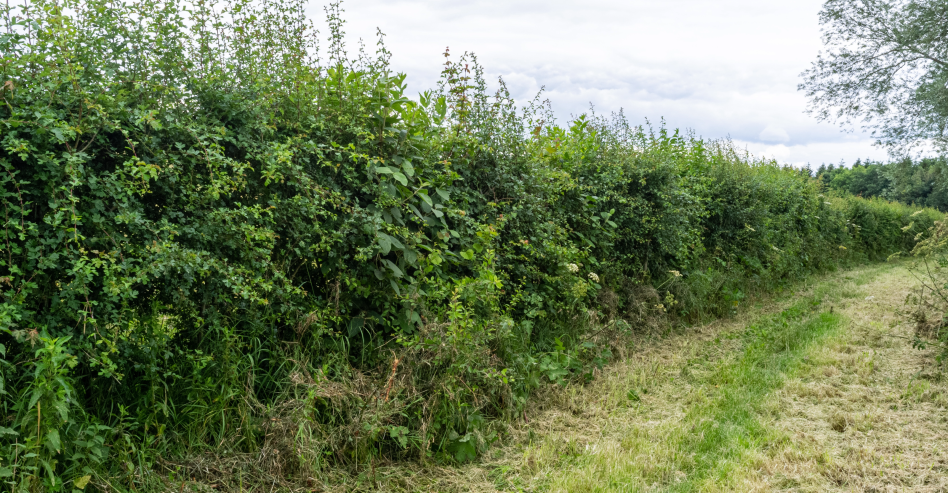Hedges are one of the most valuable assets found on farms. To reap all the benefits they can provide, well-maintained and managed hedgerows are crucial. This means striking the right balance between under and over-management. Too much management and hedges will be devoid of structure and complexity, which birds, mammals, and invertebrates need to survive throughout the year. Not enough, and a hedgerow will slowly become a ‘leggy’ line of trees, failing to provide the proper structure that hedgerow wildlife needs.
A network of well-managed hedges can provide numerous services to farm businesses. They can help save costs, sequester carbon, prevent soil erosion, improve livestock health and welfare, Improve crop pollination rates and pest predation, and make farms more resilient and adaptable to extreme weather.
Saving time and money
Healthy hedgerows are home to several beneficial insects which can help improve yields and reduce the need for pesticides through pollination and natural pest control. Adopting nature-friendly hedgerow management will support the productivity of your business and reduce your reliance on costly inputs to maintain production. In livestock systems, hedgerows can provide a vital source of shelter against the elements, improving the health and welfare of your animals. Similarly, many hedgerow plants, such as willow, contain medicinal properties that enhance livestock vitality. Managing hedges on a rotation to secure these benefits can also reduce fuel and labour costs associated with more frequent cutting.
Adapting to a changing climate
Crops and grasslands are impacted by extreme heat, drought, heavy rainfall, and flooding. Severe weather is linked to adverse effects on yield, winter animal feed supplies and field operations such as drilling and harvesting. Hedgerows can help build a farm’s climate resilience by providing an essential cooling effect, shade and shelter. They can also reduce flood risk due to increased infiltration, decreased water flow and reduced soil erosion.
Carbon sequestration and storage
Hedgerows are an undervalued asset in efforts to mitigate climate change. They can help reduce your farm’s carbon footprint, providing environmental benefits and an alternative income stream. It’s estimated that an additional 500,000 tonnes of CO2 could be sequestered each year by hedgerows by adopting different management and allowing them to grow. Hedgerows are an undervalued asset in efforts to mitigate climate change.
Timing is key
Carefully managed hedgerows are essential for many birds, mammals, reptiles, amphibians and invertebrates. Legally, hedgerows must remain uncut from March through to September to protect breeding birds during the spring and summer, leaving the autumn and winter months available to implement a hedgerow management plan. A healthy hedgerow network across a landscape provides connectivity and corridors for wildlife to travel safely. A rotational and late-season management schedule provides optimal nesting and feeding habitats. Generally, this means delaying management to the end of the winter, if possible.
In the summer, hedgerows provide nesting space and an abundance of pollen and nectar for bees, butterflies and hoverflies. In the winter, they provide shelter against the elements, while berry-producing plants offer a readily available source of energy which helps sustain many species throughout the colder months.
A bit at a time
Hedgerows benefit from a rotational schedule where they are cut once every three years. This break in management allows enough time for hedgerows to recover, creating a dense structure which benefits biodiversity. A farm could be blocked into thirds so that a portion of the hedge network is cut yearly instead of all hedgerows once a year. This helps reduce fuel and labour costs while ensuring a diverse network of hedgerows across the farm.



